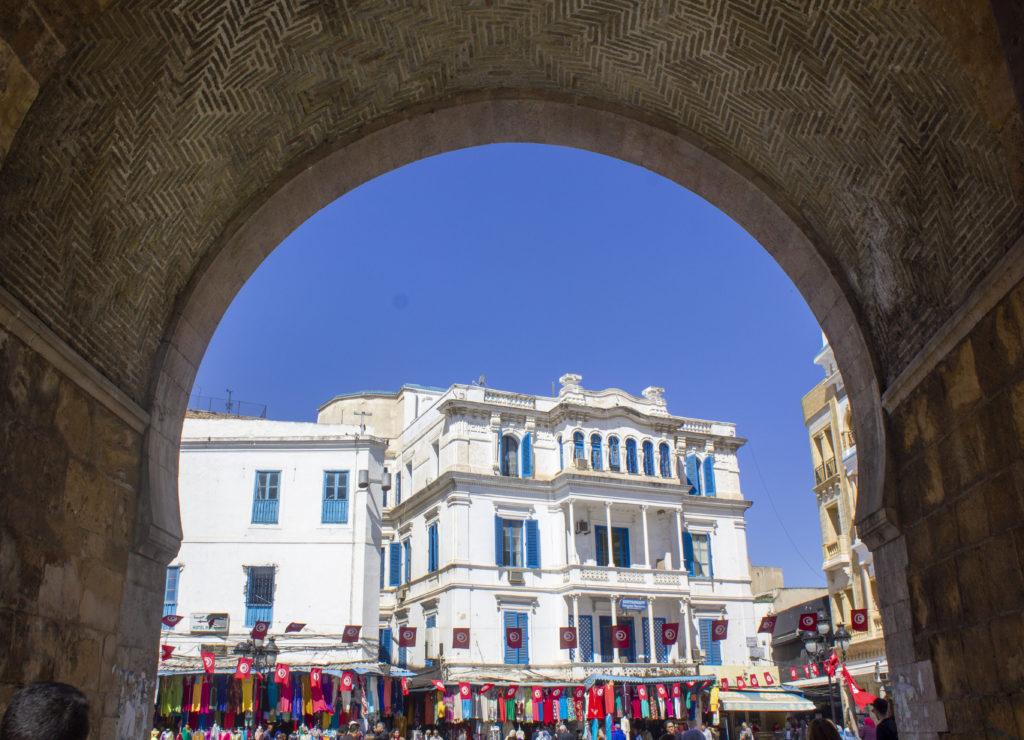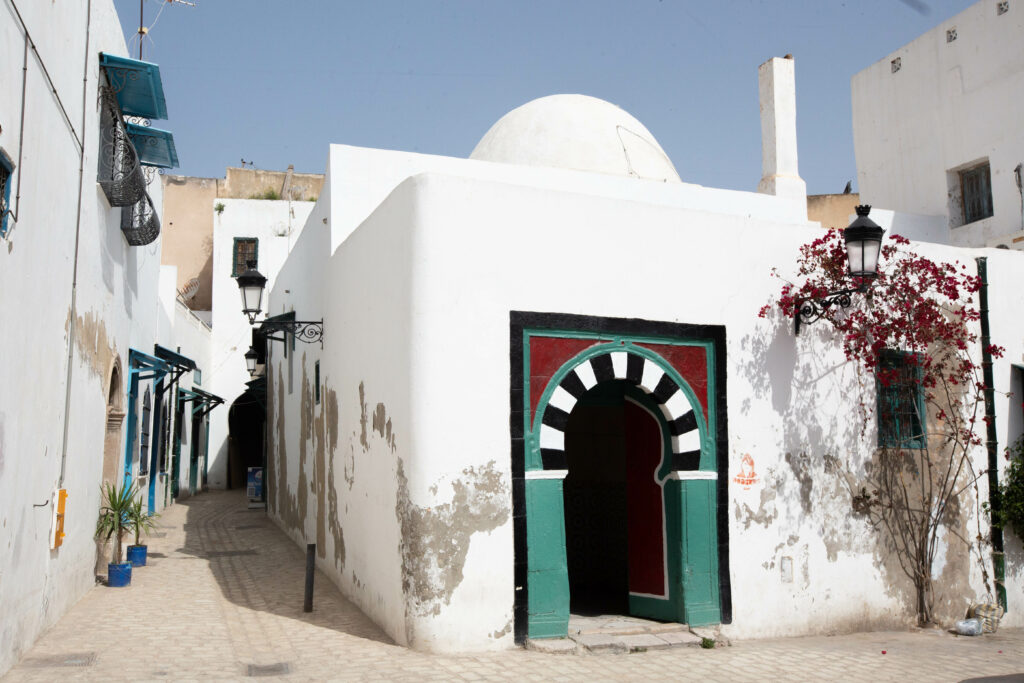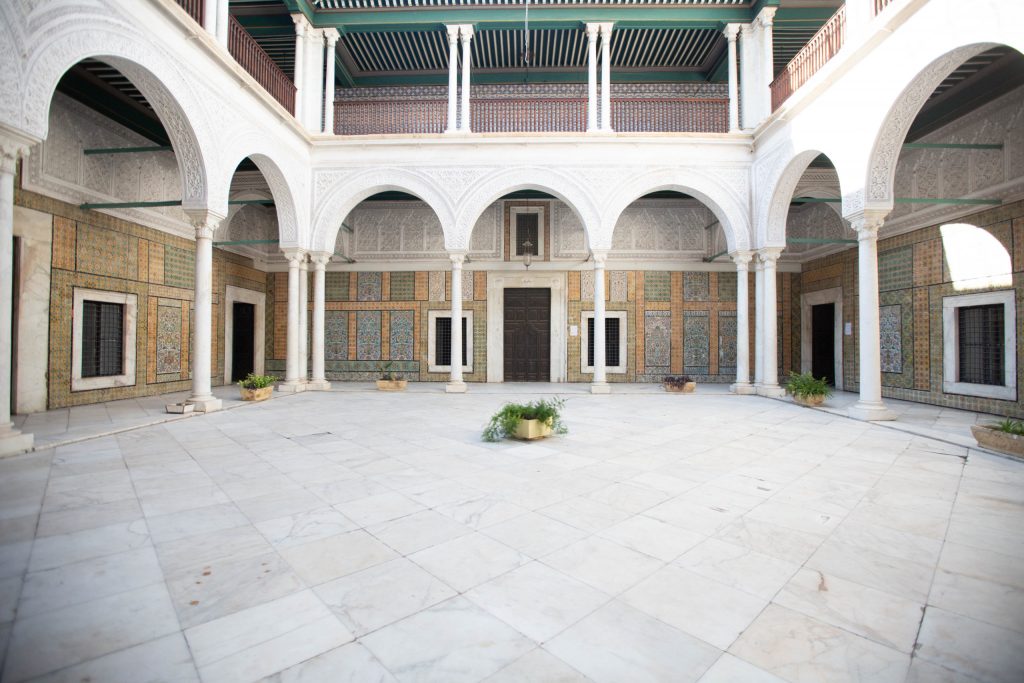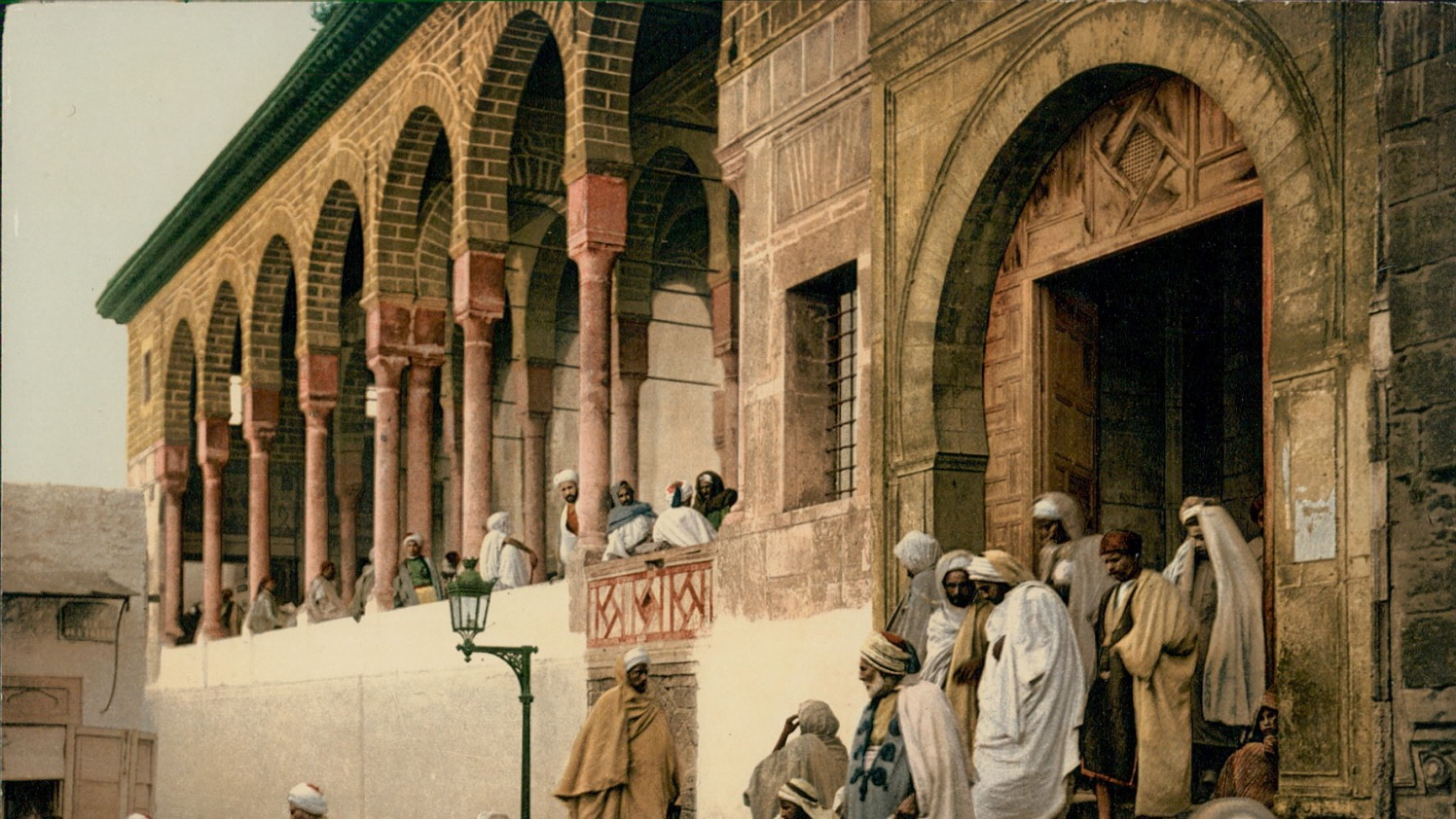
History of the Medina
Over a thousand years of history

The Medina of Tunis
Over a thousand years of history
The history of the Medina of Tunis goes back to ancient times and is intimately linked to the geography of its place. Perched on its hill, we can find traces of a small Berber village as early as the 4th century BC. During the Punic period, the hill represented a perfect lookout point to observe the comings and goings of ships and caravans that took turns on Carthage. Destroyed by the Romans during the third Punic war, the village was rebuilt even before its big neighbor, Carthage.
From a simple village at the crossroads, it grew in size and importance with the Arab conquest.
It was in 698, during the Arab conquests, that the Umayyad governor Hassan Ibn Numan, after having successfully undertaken the siege of Carthage and its conquest, decided to settle in the small perched village of Tunis and to lay the first stone of the current Medina. Tunis was then a place intended to house a garrison and a fleet. Its geographic position was ideal for this undertaking. It was separated from the sea, a few kilometers away, by a lake that protected it from the Christian fleets, and was connected to it by the canal that the Umayyads dug at the place called Halk Al-Wadi (La Goulette). Tunis played at that time the role of an outport of the capital Kairouan, allowing it to control the north of the country and to lead raids against the Christian installations on the other side of the sea.
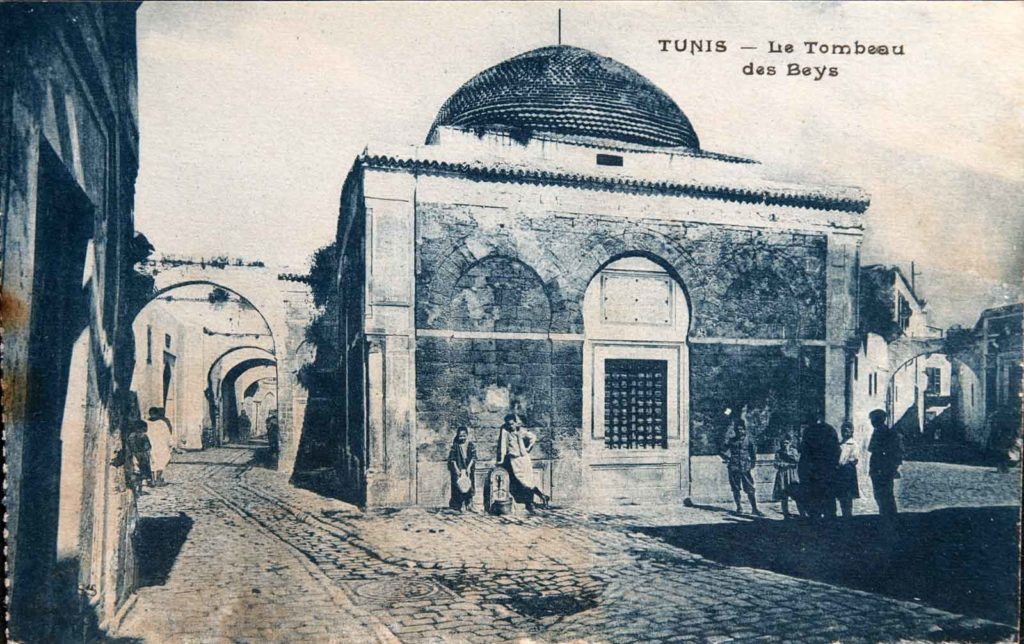
Hassan Ibn Numan also erected the first version of one of his most famous monuments, the Zitouna Mosque (olive tree in Arabic) in 704. This mosque was built on the remains of a Christian basilica, which according to the legend reported by Ibn Abi Dinar hosted the tomb of Saint Olive (Zitouna also means olive in Arabic). The Zitouna was the second mosque built in Ifriqiya and the second largest mosque in Tunisia after the Great Mosque of Kairouan.
Tunis gradually grew and developed. The geographer Al-Yaqubi, who visited the region between 876 and 889, evokes a “Great City”, equipped with a brick and clay enclosure, except on the seaside where the wall was made of stone.
It is, in fact, under the Aghlabids that Tunis experienced its first important development. They ordered the complete reconstruction of the Zitouna Mosque in 864, which saw the emergence of a scholarly milieu, notably of scholars and jurists. While the port area around the Sea Gate (Bab Bhar) grew, Tunis became the nerve center of a flourishing trade between the two shores of the Mediterranean and up to Egypt and Syria.
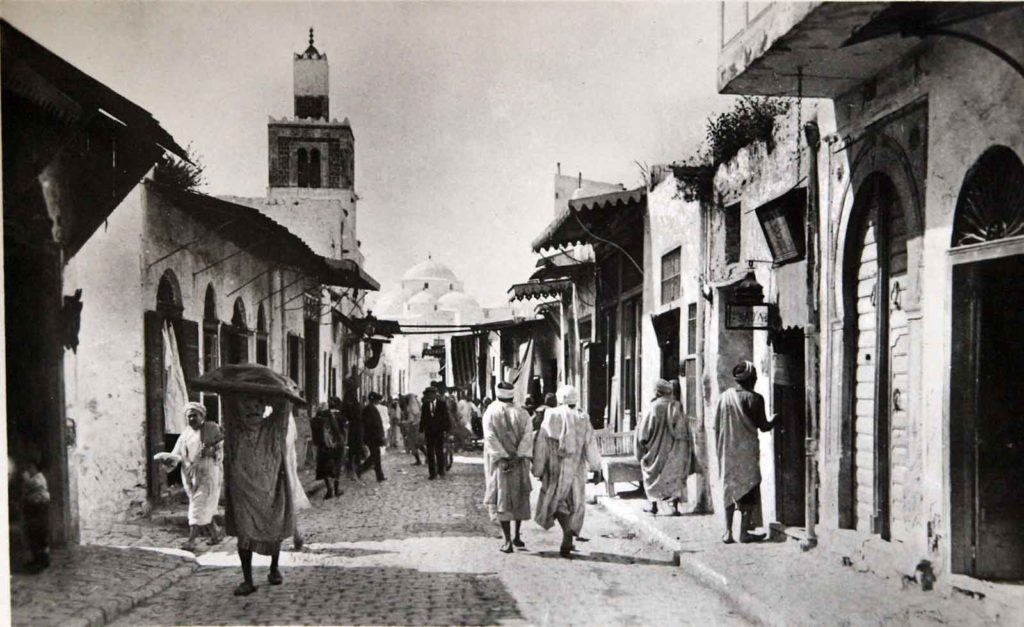
The Arab geographer Al-Bakri speaks of “one of the most illustrious cities of Ifriqiya”, but also one of the most rebellious. Indeed, several revolts within the army opposed it to Kairouan, in the eighth century, and especially in the ninth century. For Al-Bakri, “Tunis has always been distinguished by the frequency of its revolts against the rulers of Ifriqiya and by its readiness to resist the orders of its governors; more than twenty times it has gone into insurrection.
Revolts are harshly repressed. That of 894, saw the Emir Ibrahim II take back the city by arms and deliver it to pillage and destruction. Under the Shiite Fatimids, Tunis was one of the centers of opposition to the caliphs, notably through the speech and actions of the Sunni jurist and devotee Mehrez ibn Khalaf.
When Mehrez ibn Khalaf settled in the Medina, leaving his native Ariana, in the district of Bab Souika, in 1014, the city was then in the period of the end of the reign of the Shiite Fatimids and of great troubles. The city, its ramparts, souks, and residences, plundered, destroyed, did not come out unscathed from the revolt of Abu Yazid which started on September 30, 945. Mehrez then participated in the construction of new ramparts around the medina and developed social, religious, and especially political activities to fight Shiism. He provided the city with new souks, which were free of all non-Quranic taxes. As a sign of gratitude, the inhabitants of the city gave him the honorary title of “Sultan of the Medina”. He also helped the Jews of Tunis to make their case before the Bey to allow them to take refuge in the walls and settle in the Medina. The Jewish Hara was then created in the Bab Souika district, near his home. At his death, he became the patron saint of the city, under the name of Sidi Mehrez. His mausoleum, near Bab Souika, continues to attract believers today.
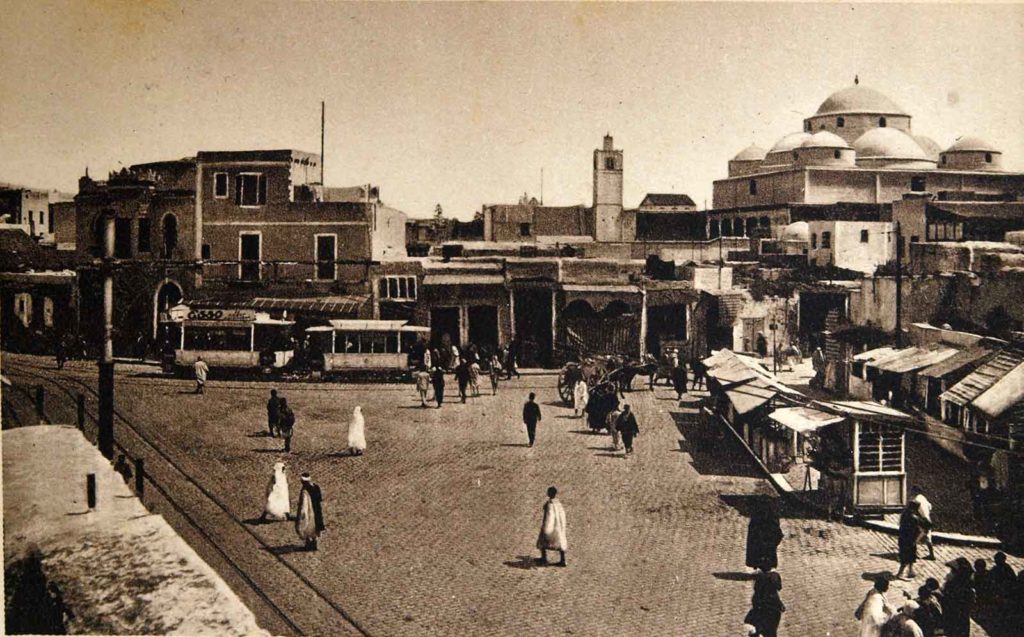
Thus and despite some passages of history that have seen it become the capital of Ifriqiya, Tunis remains the second city of the region, behind Kairouan. For example, it has only 15 hammams where Kairouan has 48. Soon, it will know its first independent dynasty, and an event in particular, will allow this power takeover.
In the eleventh century, the Maghreb in general and Tunisia in particular saw the migration of Bedouin Arab tribes: the Hilalians. They crushed the Zirid armies and sacked Kairouan. The Zirids and the population of Kairouan and its surroundings took refuge in Mahdia, but also in Tunis. It was then that Tunis experienced its first independent dynasty, from 1059 to 1159, the Banu Khurasan family. The city grew and many souks selling goods “whose appearance fills the spectator with admiration” (Al-Bakri), as well as many fondouks to welcome travelers and merchants, were built. Al-Bakri was dazzled by the wealth of its inhabitants, whose homes had doors framed with white marble, probably from the ruins of Carthage.
During this period, Tunis definitively replaced Kairouan as the first city of the region and it is quite naturally that the Almohad Caliph Abd al-Mumin, completing his conquest of the Maghreb, chose it as the capital of the province of the Eastern Maghreb.
It will remain so until today.
The city is still growing and is organized around the Great Mosque of Zitouna, from which are born or towards which converge two axes: North-South and East-West. The Medina, of oval shape, is surrounded by a continuous wall and dominated by a Kasbah, seat of the government of the various dynasties which succeeded there (since the Banu Khurassan, until the Husseinites).

As it grew, the Medina acquired suburbs and a second wall. Of all its ramparts, only a few vestiges of the former grandeur remain today. Once pierced by numerous doors, there are only four left today: Two within the city walls: Bab Bhar and Bab Jdid, and two outside the city walls: Bab El Khadhhra and Bab Saadoun.
The urban fabric of the Medina is becoming denser. Divided into several districts, it was endowed over the centuries with numerous souks (markets) specialized in trades, some of which still exist today: Souk El Blaghjia (manufacture of the Balgha, traditional shoe), Souk El Chaouachine (manufacture of the chechia, traditional headdress), etc…
High place of Islamic thought, the Medina of Tunis shelters numerous mosques, Medersa, Zaouias, mausoleums, and necropolises. Its most important monument remains to this day the Zitouna Mosque which saw the birth of the first Islamic university known and recognized throughout the Muslim world.
The Medina of Tunis was the nerve center of the country for several centuries and was home to the palaces and residences of its rulers and its most important families. Sumptuous dwellings with dazzling splendor that remain to this day and some of which have been transformed into cultural centers, headquarters of organizations and associations but also into hotels and guest houses. With its souks, its urban fabric, its residential quarters, its gates, and its more than 700 monuments, the Medina of Tunis is among the best preserved in the Islamic world and it is for this reason that it has been listed as a UNESCO World Heritage Site since 1079.
Discover more
The gates of the Medina
The doors played an essential role in a Medina. They…
Historical Monuments
Prominent place of Islamic thought, the Medina of Tunis is…
Hammams
The Moorish baths or hammams were adopted and arranged by…
Palaces and Mansions
The Medina is rich in mansions and palaces which still…
Souks & Craftsmen
Divided into several districts, the Medina was endowed over the…

Guided tour
Choose a tour
Discover the Medina of Tunis and its many facets with Mdinti by choosing from our proposed unprecedented tours.




